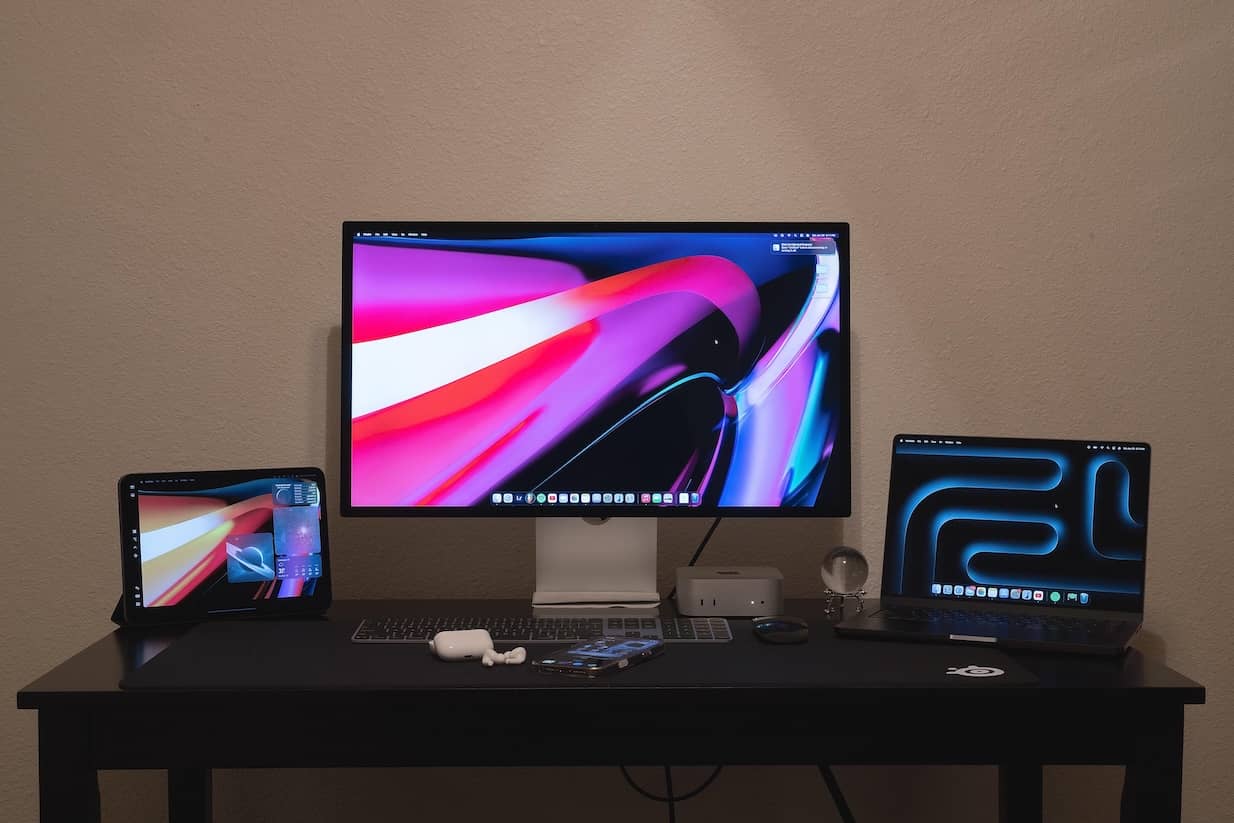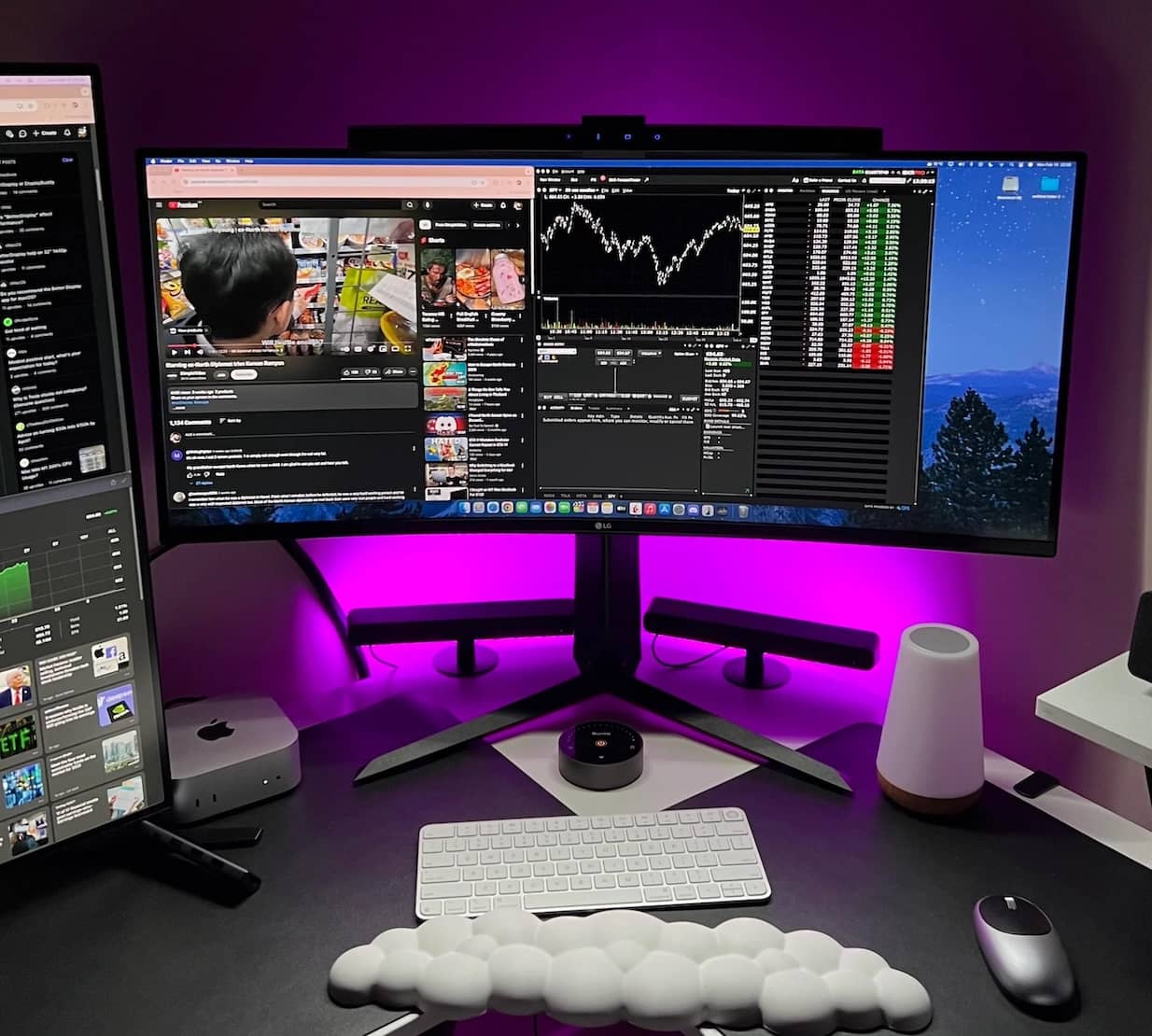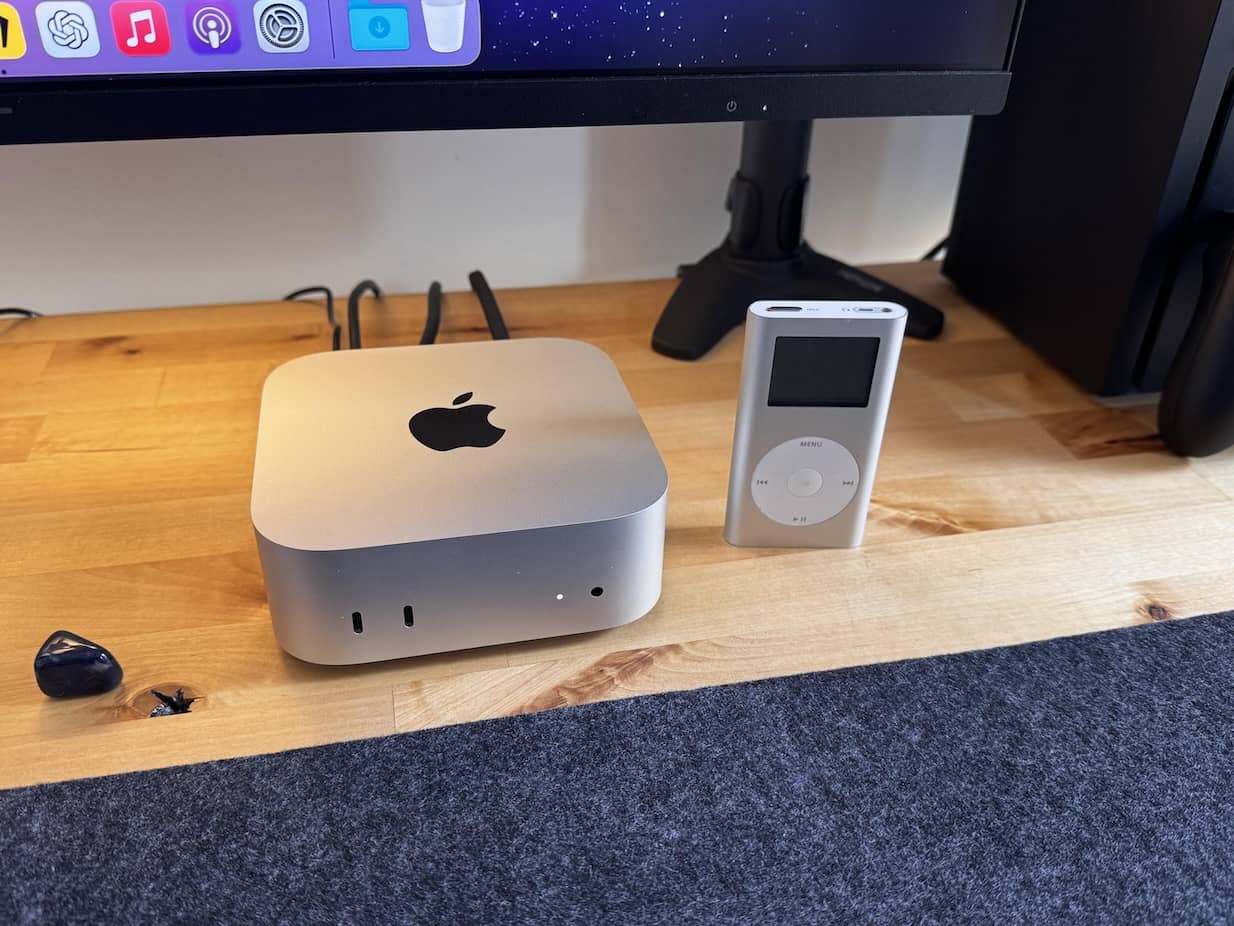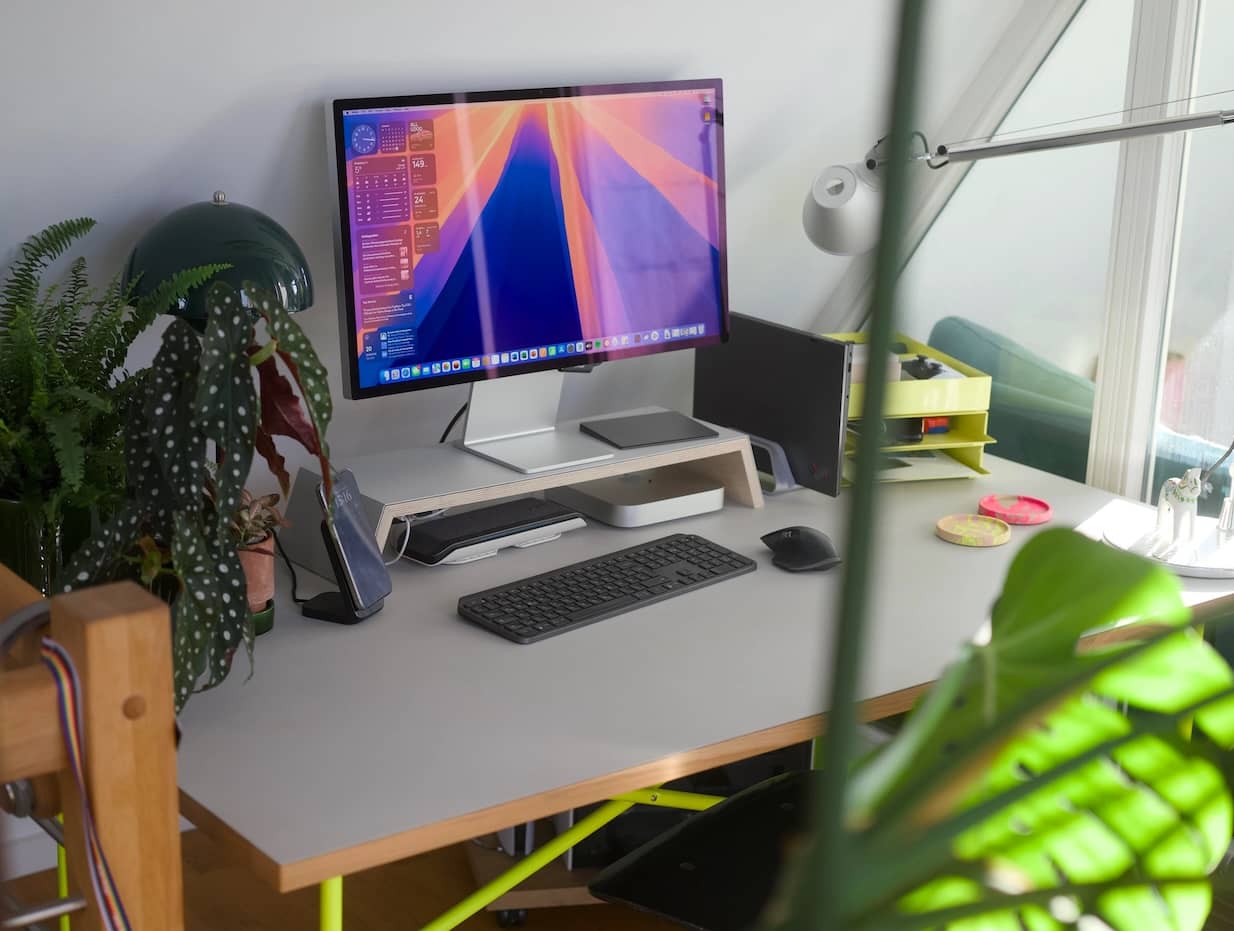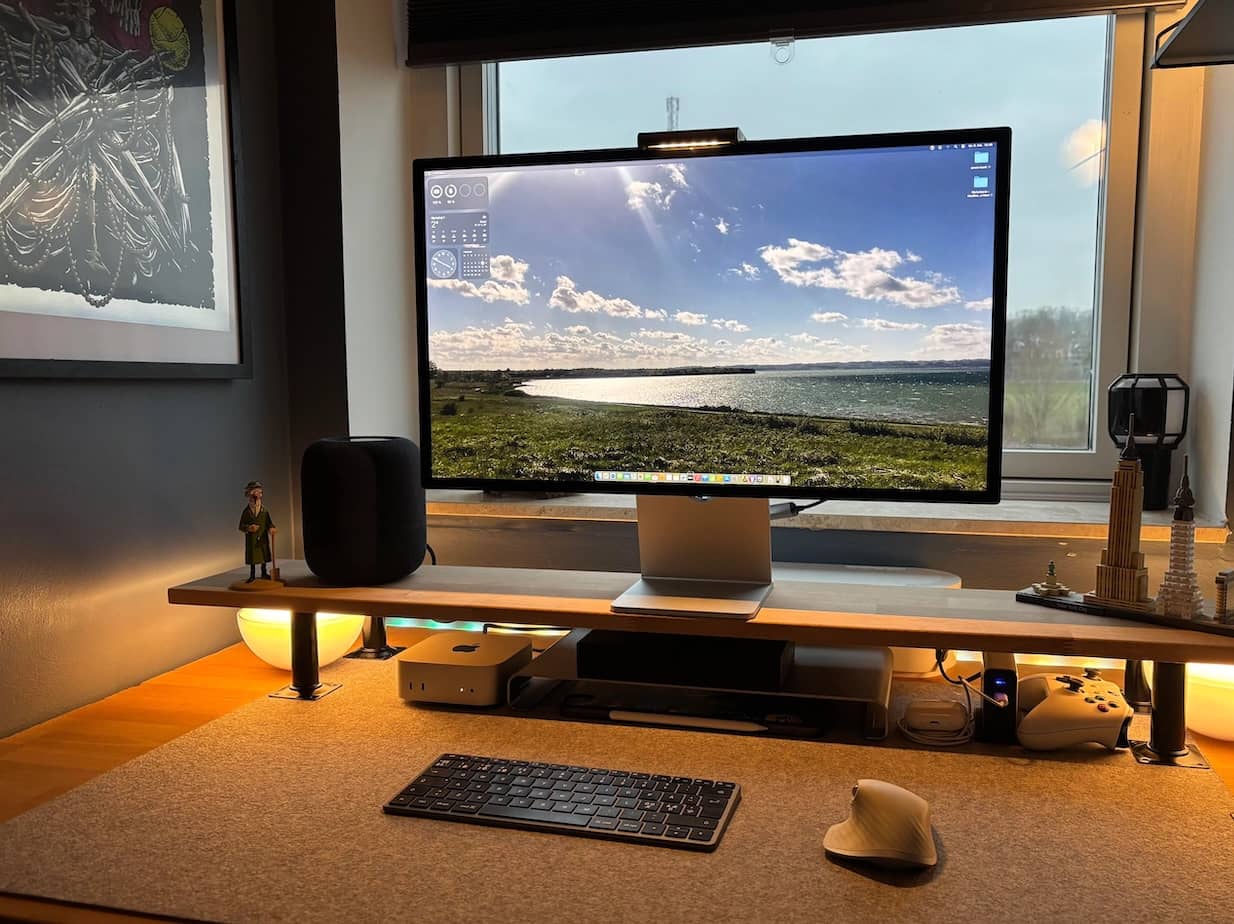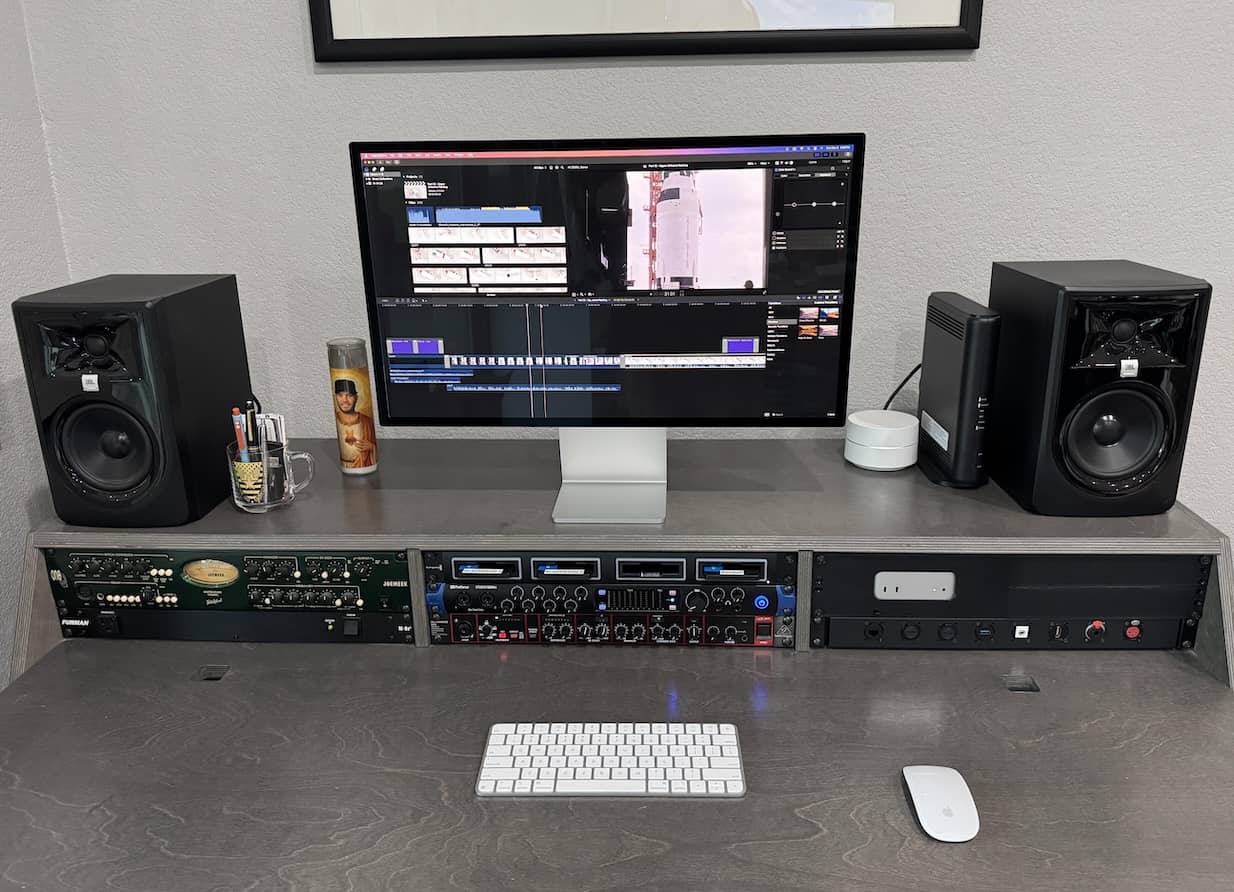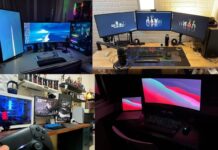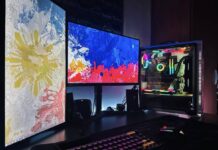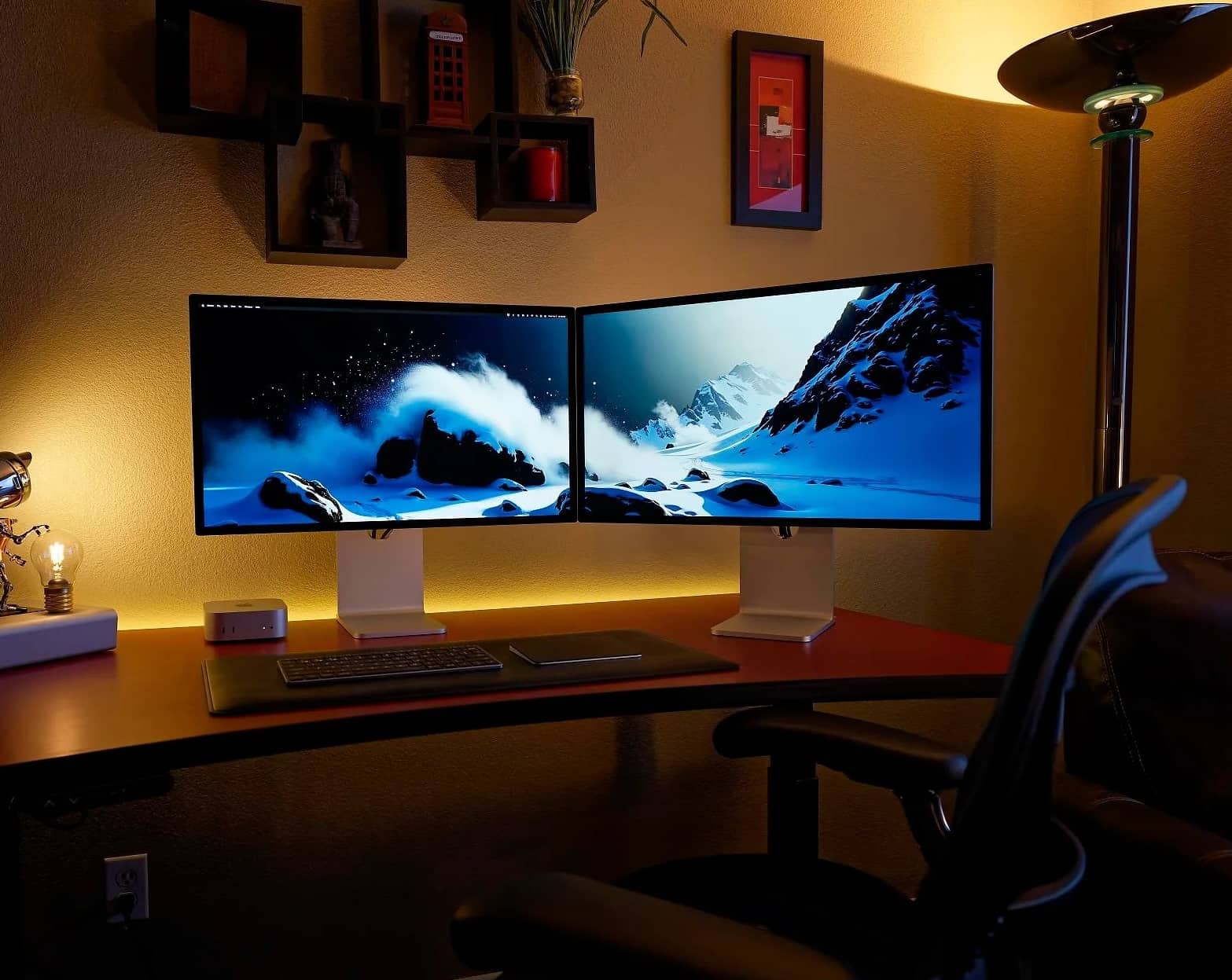
Consumers are beyond encouraged by the state-of-the-art computers coming out of Apples’ engineering factories. Let’s face it, they lead and innovate while others are left to play catch-up. The proof of this daring statement can be found in their Mac Mini M4, a Rolls-Royce level sleek computing powerhouse dressed up in silver accents. On first sight, it’s a compact and appealing box of ports. The interior is something else altogether, with its computing power rumbling, barely restrained.
For those who only take notice of numbers, we’re talking about a five-by-five inch elegant silver brick—armed to the max with three Thunderbolt ports and HDMI connectivity— filled with super-fast Apple silicon. As the label says, an M4 processor architecture hums with power inside, delivering a neural processing engine, lightning fast ray-tracing, and enough computing juice to run the latest processor intensive video production apps without breaking a sweat.
However, and isn’t there always a ‘however,’ this is a purebred, pedigree machine without a display. To really leverage the best out of the Apple emblazoned little powerhouse, the best monitor for Mac Mini M4 computers needs plugging in. That’s our job today, to hook up the ‘best of’ hopefuls and see if they have enough eye candy to impress our MacHead enthusiasts. It’ll be tough; Mac lovers don’t accept anything less than the best. Setting the bar high, we’ll be starting off with the Apple Studio Display
Hold on—before we dive into the contenders, let’s take a moment to assess what it means to be in the running for a computing partnership at this level. The best monitor for Mac Mini M4 race isn’t just about looking good next to the sleek, powerful little silver box.
Standingdesktopper's pick
What to Look For in a Mac Mini M4 Display
There’s the obvious and not so obvious features. Superb color depth and image crispness roll off the tongue without any help, but what about lesser known display talents, like HDR support and picture-in-picture?
Swivel freedom, built-in anti-glare coatings, low blue light balance, the list swells. Don’t panic, we’ve got you covered. Here’s a brief look at desirable features that’ll match the Mac Mini M4 and realize its full potential:
Superb color accuracy – While regular computers find their way into gamer dens as entertainment systems, it’s more likely a Mac Mini M4 will be found in video editing suites and photography studios. A wide and accurate P3 color space is essential.
Brightness – The first monitor in this review comes with 600 nit clarity, illuminating highlights and shadows with superior balance, yet never washing out onscreen colors or causing clipping. True-to-life color is the result of high-fidelity brightness management.
High-resolution – Capable of supporting three displays, hitting 6K resolution on one, the best monitor for Mac Mini M4 ultraHD usage needs to at least match that level of pixel density. By-the-way, using two monitors, the little Apple Mac can handle 8K.
HDR support – Modern video editing tools work natively with High Dynamic Range footage. With 10-bit HDR10 and Dolby Vision so common now, HDR support keeps editors ahead of the curve, ensuring accurate color grading.
Swivel and height adjustment – This isn’t one of the tougher features to anticipate. Even our reviewers, sometimes cramped behind their tiny desks, want monitors that can adjust to meet their eye level.
Multiple input options – Thunderbolt ports and USB-C connectivity ensures plenty of desk decluttering choice, taking the cable tangle away from your Mac Mini M4. Two other likely ports you’ll find are an HDMI connector and DisplayPort 1.4, which caters to higher resolutions and refresh rates.
A halt to proceedings comes at this point. Not that there isn’t more, like adaptive syncing and anti-glare coatings, but we feel a restless need to get on with the reviews, starting with the aforementioned Apple Studio Display.
Apple Studio Display
Our first choice for an enduring best monitor for Mac Mini M4 partnership is the Apple Studio Display. Even from across the office, its very easy on the eye, a slender 27 inch silver chassis with a 5K Retina display. The 5120×2880 pixel resolution massages the human retina, layering down 218 pixels per inch via the M4 10-core GPU, zipping graphics data at a remarkable 120GB/s.
Our test used Adobe applications and Final Cut Pro footage to see just how balanced and accurate the color depth could be viewed by an experienced Mac reviewer. He silently loaded up Lightroom and Adobe Bridge, running Camera Raw so that the P3 wide color gamut could render every highlight and shadow with pop and enhanced depth. True Tone Technology—a proprietary Apple color balancing feature—did the rest, keeping color temperatures rich and detailed.
Mac Mini takeaways – The Mac Mini M4 supports Dolby Atmos. Accommodating this feature, the Apple Studio Display comes with six-speaker spatial audio standard. There’s also a three-mic array onboard, which can quickly and easily keep podcasters in touch with FaceTiming editors. Thoughtful design enhancements like this are key when keeping desks clean and tidy, free of clutter and up for office minimalist of the month award.
What we liked, and there was a lot to recommend, was the tilt and height-adjustable stand, which was every bit as streamlined and elegant as the actual monitor. That’s not a given. Sometimes, knowing a large monitor will conceal its desk stand, designers don’t put a lot of effort into its looks. Next, testing FaceTime out, the 12MP Center Stage webcam kept us in focus and in touch with a staff member in our annex. Voice and sound were both sharp and intelligently managed.
It’s expensive, but that’s what we’ve come to expect from Apple. It’s also a tempting purchase, one that could coax any graphic designer into a fast draw, pulling out their wallet. Color accuracy and vibrancy was high, never impacted by office fluorescents. We credit the anti-glare coating with that fine job of cutting out reflective interference.
BenQ PD3220U Monitor
One step forward, one back, the BenQ PD3220U 4K monitor drops resolution slightly but ups its diagonal display size to a large 32 inch desk encompassing scale. That’s when compared to the Apple-made screen above, of course. It’s the first third-party screen to enter our list, and it definitely deserves its place on our best monitor for Mac Mini M4 computers review. Why should you believe us? Because we’ve come prepared, armed with all the facts and figures.
Specification number one is the 95% P3 color space, maintaining a broader range of hues—wider than standard sRGB. It’s built to satisfy demanding professional video editors. To be fair, this is one of those system properties consumers will raise a quizzical eyebrow at, while industry insiders will raise both eyebrows, this time in full approval. Finally, a low Delta error rate (Delta < 3) provides color accuracy, which is a feature video production types quickly take advantage of when color grading.
Mac Mini takeaways – Deferring once more to our Mac expert, the Apple ecosystem has been optimized to work with high P3 color spaces and low Delta errors. The BenQ PD3220U satisfies these stringent color requirements. It also illuminates the highs and lows in HDR scenes with great clarity, then does much the same to SDR footage, enhancing standard video clips to the max. Mode settings took things a step further, working with dedicated settings to improve CAD imagery, animations, movie footage, and stills.
Stepping back from screen features like Pantone print accuracy and one-click device color syncing, we inspected the ports for problems. No issues presented themselves, just a ready for action all-in-one USB-C connector, a DisplayPort 1.4 port, HDMI connector, and a Thunderbolt 3. That’s a good set of futureproof ports, each one every bit as capable when using legacy devices.
Finishing things off, peak brightness was measured at 300 nits, audio quality came fitted as two slightly underwhelming 2 Watt speakers, and an incorporated KVM switch took charge of multiple system setups using one keyboard. All-in-all, expect a condensed workhorse computer with a true-to-life display when this monitor is paired with a Mac Mini M4.
LG UltraFine 27MD5KL-B Monitor
Contrary to reports from other quarters, our reviewers have never had any issue with LG consumer-grade products. Their professional-grade LG UltraFine did nothing to change our minds, operating perfectly. Its 27 inch display and 5K UHD resolution remained rock-solid locked, rendering a DCI-P3 99% color gamut that might’ve had our resident graphic designer drooling, assuming she hadn’t had lunch just yet.
The black bezel around the display was a little wider than some of the models we’ve reviewed, but it didn’t distract from the Adobe applications popping up on the monitor. Final Cut Pro, timeline rendering 4K footage rapidly on the 16-core M4 neural engine and 10-core GPU, hooked up seamlessly to one of the 3 inbuilt monitor Thunderbolt ports, allowing us to port the footage over to a second video production workstation.
Mac Mini takeaways – At 500 nits of brightness and an 1100:1 contrast ratio, the 218 ppi display won’t challenge any of the premium OLED monitors, but its 5120×2880 pixel resolution does make expertly shot mirrorless photographs and industry video footage look pin-sharp, ready for editing and post-production, M4 style. The chassis also paired well aesthetically, sitting above our Mac Mini M4 with its elegant lines radiating premium appeal.
The IPS panel framed by the black bezel was viewable from either end of the desk. This highlights a talent for collaborative projects; if one editor leans over to consult on a post-production change, a second can swing in to approve the edit. Shakes from office personnel when making that swing in to offer editing advice didn’t seem to shake the monitor. On the contrary, it felt solid and durable to the touch, its controls offering just the right amount of smooth resistance when a screen menu needed accessing.
We used a set of Yamaha HS8 studio monitors and a pro-grade audio interface to edit video audio. The LG UltraFine does have stereo speakers, but they’re more for listening to entertainment, music and movies, not industry-standard multimedia video footage.
Apple Pro Display XDR Monitor
If you’re chasing absolute pixel perfection, this is the monitor your eyeballs have been lusting after. The 32 inch Apple Pro Display XDR sits tall on our biggest editing desk, showcasing a display that exhibits such rarefied features as 1600 nit brightness and a razor sharp 6K Retina high-resolution panel. With color accuracy so exact it could put a chameleon lizard to shame, this is quite possibly the best monitor for a Mac Mini M4 rig, but it doesn’t come cheap.
Assuming a successful photography studio or video production workspace is willing to take the plunge and make the investment, there are two choices. A $5K purchase buys the regular XDR (Extreme Dynamic Range) variant. If you want the glare reducing Nano Texture Glass coating, expect to add another $1K to the cost. We opted for the non-coated model, deciding to remove any sources of office glare ourselves. That kept the 1,000,000:1 contrast ratio and 10-bit color depth beautifully true-to-life.
Mac Mini takeaway – The Apple Pro Display XDR took every expectation we had and then doubled it, rocketing every image-related setting to the max. The P3 color gamut was wider than ever, with edge-to-edge delivery of over 1 billion colors dazzling every one of our team. More productivity rated, the monitor’s rear is equipped with four slim USB-C type connectors, three of which are designed for Thunderbolt purposes. It was on checking out these ports that we took the opportunity to measure the monitor. At 1.1 inches thick and 16.2 inches tall, its svelte form factor surely would be the ideal match for a compact Mac Mini M4.
We placed the monitor in a video editing role, so audio was part of our requirements. Since there’s a strong professional bias on the Apple Pro Display XDR, though, every spare inch is dedicated towards precise image rendering, so we called in our Yamaha studio monitors once more. If that—and the addition of the $1K Pro Stand—puts this device out of your reach, consider instead the Apple Studio Display, a monitor that’s still Mac-branded, one that offers six-speaker immersive Dolby Atmos audio and a 12MP webcam, too.
It’s the best of the best, this Apple manufactured monitor, but it’s not cheap. Costs can also quickly add up when extras like Pro-grade stands and glare reducing coatings are added. All that being said, this is the color accurate king of the Mac Mini M4 compatible collection.
Samsung ViewFinity S9 Monitor
As busy device reviewers, we don’t always have time to wax poetic about features. We like to be concise and get right to the point. That doesn’t prevent our testers from appreciating the ‘bigger canvas’ label given to the Samsung ViewFinity S9 monitor. With its matte finish eliminating overhead lighting glare, the 5K UHD display really does seem to share some of the characteristics associated with a canvas. The DCI-P3 99% wide color gamut and super-bright 600 nit IPS panel completes the metaphor, creating a visual feast for professional photographers and video producers alike.
Just like the Apple displays reviewed further up, the monitor has the good looks, but that outer appeal is complemented by an equally glorious factory-calibrated display panel. A low Delta < 3, quick switching between DCI-P3 and sRGB color spaces, a 218 ppi pixel density, the display punches well above its weight class. And all of this should come as no surprise, not really. Samsung has long ruled the roost as both a best-in-class monitor producer and flatscreen television manufacturer as well.
Mac Mini takeaway – Although the Samsung ViewFinity S9 will hook up to a number of sources, it does feel like a Mac product. The slender silver chassis oozes Apple finesse, and the skinny stand doesn’t do anything to dispel that impression, presenting its blunted edges and turning smoothly to tilt the monitor and adjust its height, almost like an exercise in ergonomics at work. We ran the display through its paces, pulling up Final Cut Pro projects while using the stand until it became second-nature.
To the rear, expect DisplayPort and Thunderbolt 4 compatibility. Everything, apart from DisplayPort, is shaped to accept USB-C connectors. Four of these are lined up, with one of them reserved for Thunderbolt connections. A 4K camera completes the external good news, keeping FaceTime video conference calls sharp and beautifully rendered. And, on top of all this graphical excellence, there’s the option to switch to entertainment and gaming modes. Productivity to movies, all on a steel-reinforced 90° swivel stand, what more could you ask for?
Of some note at this point: Our model operated without any issue whatsoever, but the reviews at the bottom of the webpage do suggest problems. Perhaps because this monitor isn’t dedicated towards image accuracy—it’s an entertainment display as well—it encounters some multi-function stress, which is then expressed as quality control problems. All we know for sure is that our model performed just as designed.
Dell UltraSharp U3223QE Monitor
The 31.5 inch Dell Ultrasharp U3223QE has near bezel-less edges surrounding its 4K IPS panel. It’s not a dealbreaker when the bezels are wide, but our discerning testers do like to see every inch of monitor space used. For one thing, a properly maximized screen area proves a commitment to design ethics. It doesn’t mean the 3840×2160 display will follow that initial design promise, but it does imply good things are in store for our review team.
Sure enough, we didn’t have to wait long for our test results. A more than respectable 2000:1 contrast ratio kept blacks inky deep. Incidentally, the analysis work has been carried out by Dell themselves, as curated in the following paper on Dell Black IPS Technology. It’s a feature that ably complements the super accurate DCI-P3 98% and 100% sRGB color spaces. Slipping in one final number, HDR performance is assured due to VESA certified DisplayHDR 400, a 400 nit peak brightness technology that keeps deep blacks intact while bright luminances render vibrant shades of color.
Mac Mini takeaway – The passage above could throw off consumers in search of the best monitor for Mac Mini M4 applications due to the number of figures thrown at a tiring mind. Let’s just say blacks are true-to-life and color-rich tones are always authentic and razor-sharp. Pivoting away from these numbers, we took a close look at the ports and connectors concealed on the rear of the monitor base. All dressed up in silver yet again, just like Apple products like it, multiple USB-C and high-speed USB 3.2 ports lined up tightly together, supported by HDMI and DisplayPort connector, both IN and OUT.
If your small but impossibly powerful Mac Mini is going to be tangled up in cables, it loses its edge, but that’s a distinct possibility in a busy color grading or post-production environment, unfortunately. Here to sort things out, the Dell UltraSharp U3223QE monitor chassis comes equipped with a USB-C hub. There’s even a legacy RJ45 connector—there to provide hardwired Ethernet connectivity—and an audio line out. Shifting focus to the stand for a moment, the slightly rounded post was sturdy, radiating a sleek aesthetic as it smoothly shifted the screen along its 30° swivel range and 5.9 inch height adjustable span.
Numbers and benchmarks aside, we saw signs of appeal among video professionals. Also, this monitor consistently finds its way onto top ten lists, those that have garnered a reputation for trustworthiness among industry insiders.
Our Top Picks for Every Need
Would that we could recommend the 6K color authentic Apple Pro Display XDR to every one of you. Its stunning images and exactingly calibrated color profiles do a Mac Mini M4 justice in a way no other screen can match. We unreservedly believe it’s the high-fidelity screen to beat, but its price is bound to alienate many. The BenQ PD3220U monitor and Apple Studio Display are a little ways behind the Pro Display XDR, and the Dell UltraSharp is nipping at their heels.
What you should prioritize is Mac ecosystem compatibility. Thunderbolt ports and fast USB 3.1 and 3.2 connections are essential—done up in slender USB-C physical port shapes—so that huge 4K and 6K video files can be transferred rapidly. Next, know that those ports are built to drive multiple displays. An Apple monitor could be configured as the main monitor, then a second panel would be recruited as a secondary display. For these kinds of tasks, we advise taking a closer look at the computer specs. The Display Support section is what you’re looking for, part way down the Apple Mac Mini M4 specs webpage. Here, you’ll see that the small form factor computer can drive three displays simultaneously, but there are conditional resolutions and frequency refresh rates as well. Do not skip past this information.
Ultimately, every one of these monitors earns its place on our best monitor for Mac Mini M4 list, but that’s true to varying degrees. For more UHD high-resolution power and color authenticity, it’s hard to argue against Apples’ own products, but there’s the likelihood that one of these color-accurate displays will cost several times the initial outlay made when buying your Mac Mini. If budget constraints are going to be a problem, consider paying off your investment over time, or target the buyers’ sweet spot by focusing on either the Apple Studio Display or the BenQ PD3220U.
Remember, it’d be a crime to go for anything less than the best. Your new Mac Mini M4 is capable of so much, can throw around millions of pixels without ever losing track of a single color space, so don’t pair it with a monitor that isn’t equally color authentic.



